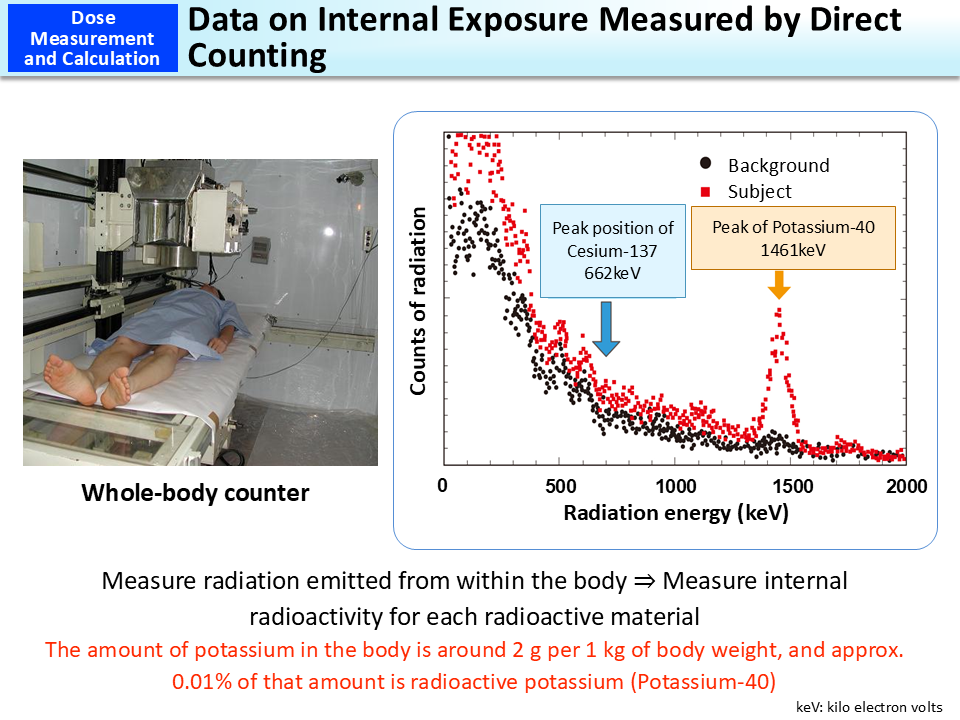Data on Internal Exposure Measured by Direct Counting
Radioactivity of each nuclide can be quantitatively assessed by measuring radiation emitted from within the body using a whole-body counter.
The black round dots in the graph represent values measured while no one is on the bed (background state). When the subject is on the bed, radiation peaks appear, as indicated by the red square dots. The energy of γ-rays is unique for each radioisotope. For example, radioactive potassium, K-40, emits γ-rays with energy of 1,461 keV. Therefore, if such amount of energy is detected, this reveals the existence of K-40 within the body. The gamma-ray energy of Cesium-137 is 662 keV.
While potassium is an element essential to life, approx. 0.01% of all potassium is radioactive. Radioactive potassium is mainly contained in water in cells and is present in muscles but is seldom present in fat cells that contain little water (p.8 of Vol. 1, “Naturally Occurring or Artificial”).
- Included in this reference material on March 31, 2013
- Updated on March 31, 2015

